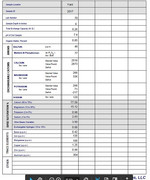
Area: ~6000SF lawn
Grass Type: New Construction - Sod Northern Mix ~1year
Mowing/Irrigation: Mow at tallest setting. Have been watering 0.5" (~45min), 2x/week when there has been no rain. Supplement with irrigation during rain events <1".
Moved in to the new construction last year, looked ok at the time we purchased but by the end of fall the yard was covered with weeds & grass did not fill into many spots. Coming out of winter it seemed that most of the yard was dead or had snow mold. Raked the whole yard to help with airflow and aerated. One week later, about June 1st, used starter fertilizer & crabgrass preemergent. Memorial day used 2 bags of milorganite. The company that aerated the lawn then came out unexpectedly and fertilized 1 week later @ 2/3lb N. (total ~1.4lb N within a week). Started watering deep & infrequently around mid June as temps were around 95deg.
Currently plan to aerate, compost, and overseed through a soil quality restoration program with the city this Fall.
Soil pH seems high, I took samples ~4-6" but reading the topic by andy I may have gone too deep into the subbase. I don't belive that I did since looking at the construction nearby is all clay with black topsoil above. We have a dog and I hope I didn't sample from a bad spot. Will be interesting to see results next year. Low OM I hope will be improved by composting this fall.
Appreciate your advice. Thanks.
